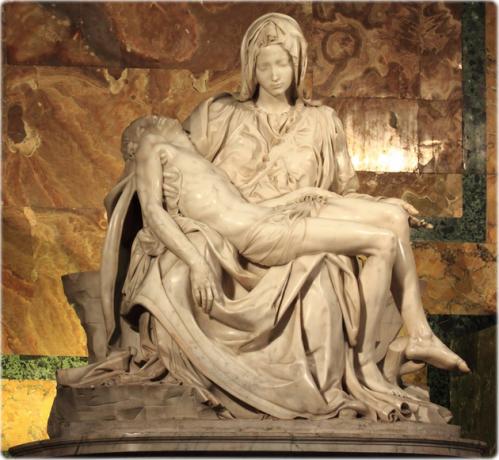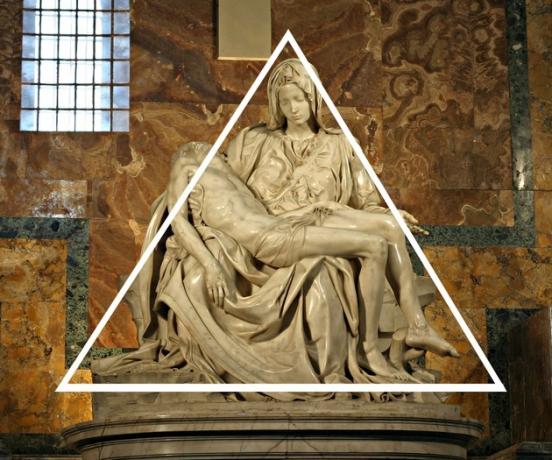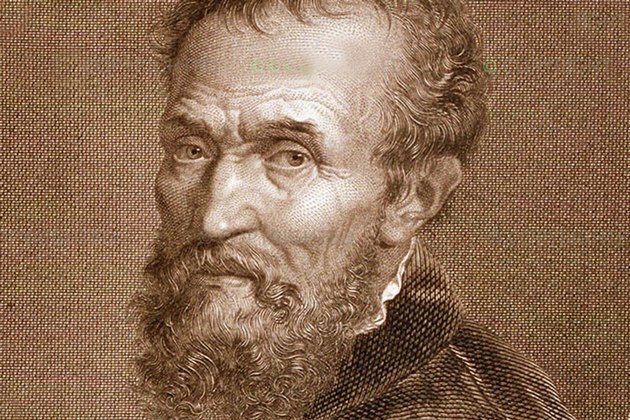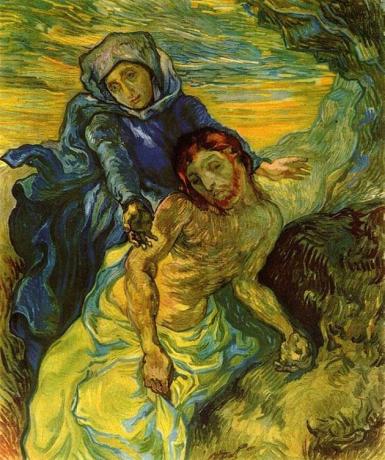the sculpture pieta, made by the Renaissance artist Michelangelo, is one of the most beautiful and impressive works in the history of Western art and one of the best known by the author.
Produced in marble in 1499, the work is 174 x 195 cm. In it, the artist represents the biblical scene in which the Virgin Mary holds in her arms Christ-her son-already lifeless.
This Christian theme is called pieta, which in Italian means "pity". Therefore, practically all works made with this motto are given the same name. The scene is related to Nossa Senhora da Piedade and Nossa Senhora das Dores.
The sculpture is located in Vatican City, in St. Peter's Basilica.

Analysis of Michelangelo's Pietà
THE pieta exhibits a technical, precise and excellent work of marble sculpture. The drapery of Mary's garments, the composition, the relaxed muscles of Christ, the expressions of characters, all these elements contribute for the work to have strength, beauty and serenity at the same time.
Here is a combination of the ideals of classic Renaissance beauty.
Pietà: elements of composition

when carving pieta, Michelangelo chose to use a scheme of pyramid composition, which was already widely used in the Renaissance period.
The artist also altered the size of Jesus' body, sculpting it smaller than Mary's, in order to better fit it into the triangular composition.
That way she would not give the impression of "flattening" the woman's body and also showing that he is her son.
the face of the virgin

The face of Mary is represented with a much younger appearance than would be common for a woman with a 33-year-old son - the age at which Christ was crucified, according to the bible.
That's because that way she could symbolize "all mothers", in addition to maintaining an expression of purity and virginity.
The Virgo also displays a countenance of conformity and resignation, in which the pain of losing the child is idealized. This brought a contrast to the works carried out with the same theme until then.
the face of Christ

The face of Jesus in his mother's arms has an expression that is somewhat serene, even though it is already lifeless.
Another important feature to be mentioned is the fact that the features of Christ are those of a European man, with fine features.
The reality is that - because of its Eurocentric character - Western art history has always represented the messiah of the Christian people in this way.
According to the bible itself, Jesus was born in Bethlehem, a city located in Palestine. Christ was, therefore, a typical Middle Eastern man.
In 2011 a documentary was made for the BBC in which researchers recreated what would be the real appearance of a subject who lived in the same time and place as Christ.
Thus, it was found that, contrary to the European representation that we know of Jesus, if he actually existed, he would have short stature, trimmed hair (as it was used at the time), dark skin and features closer to those of the people black.
Michelangelo's signature

Michelangelo signed only one work in his life, the sculpture pieta.
The inscription across Maria's torso can be read: MICHEA[N]GELVS BONAROTVS FLORENT[INVS] FACIEBAT, meaning Michelangelo Buonarroti, the Florentine, made it.
Reportedly, the signature was made after the work was completed and delivered, as Michelangelo would have heard rumors that due to his young age, another artist would be the author of the impressive work.
The sculptor then, in a fit of rage, would have inscribed his name on the work in order to clear all doubts.
History of Michelangelo's Pietà
Pietà, the sculpture made from a single block of marble that would enshrine Michelangelo as one of the greatest geniuses of art, was produced when he was just 23 years old.
In Italy, he integrated the first sculptural works with the theme pieta, which was already quite present in Italian painting, and had some sculptures in Germany and France.
The work was commissioned by French Cardinal Jean Bilheres de Lagraulas to integrate his funeral monument.
In just one year Michelangelo finished his masterpiece, however, the cardinal died before it was completed. Once completed, the pieta it was then placed on the tomb of Jean Bilheres, in the Chapel of Santa Petronilla. It stayed there for 20 years, until it was transferred to St. Peter's Basilica, in the Vatican, where it is located today.
Who was Michelangelo?

Michelangelo Buonarroti he was an important artist of the Renaissance. Born in Italy on March 6, 1475. He entered history as an icon of the period, managing to transport humanist ideals, cultural, political and religious transformations into his art.
He worked in various artistic fields, such as sculpture, painting, architecture and poetry. He was considered a genius in his day and nicknamed the divine.
Michelangelo died in 1564, in Rome, at the age of 88 and is buried in the Church of the Holy Cross in Florence.
Other works with the theme "Pietà"
As mentioned before, the "Pietá" scene was portrayed several times in other works of art. We selected 3 of them, check it out.
1. Pietà Rondanini, by Michelangelo
Towards the end of his life, Michelangelo returned to the theme of Christ's death and Mary's lamentation.
THE Pietà Rondanini it was the last work done by the artist-who produced it from the 1550s to 1564-when he died at the age of 88.
Also crafted in marble, it is 195 cm tall and belongs to Castello Sforzesco, in Milan.
2. Pietà, by Van Gogh
The board Pietà (After Delacroix) was painted by Van Gogh in 1889 in the Post-Impressionist style.
The canvas measures 73 cm x 60 cm and is now in the Van Gogh Museum in Amsterdam.
3. Samuel Aranda's photo
In 2011, Spanish photographer Samuel Aranda won the international photography award World Press Photo. The image he presented was compared to the famous work pieta, by Michelangelo.
That's because the photo shows a woman holding her child in her arms, who was wounded in a popular protest against the government in Yemen.



